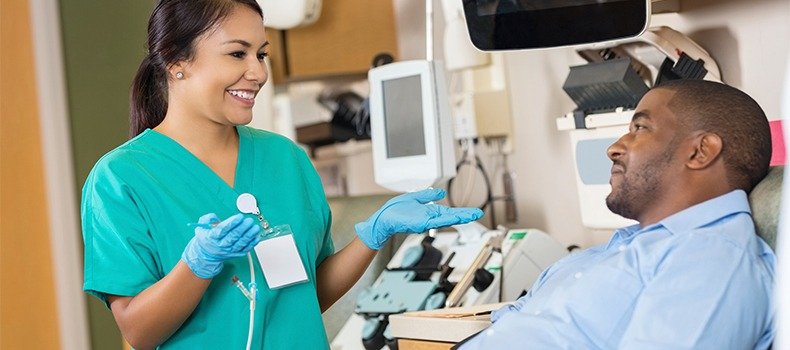
Master the Art of Blood collection: Your Ultimate Guide to the School of Phlebotomy skills
If you’re pursuing a career in healthcare or looking to enhance your medical skills, mastering blood collection techniques is a critical step. Phlebotomy, the practice of drawing blood for testing, donations, or research, requires precision, patience, and a solid understanding of human anatomy. This comprehensive guide will walk you through the essential skills, practical tips, and benefits of excelling in the art of blood collection, helping you become a competent and confident phlebotomist.
Understanding the Fundamentals of Phlebotomy
What is Phlebotomy?
Phlebotomy is the process of making an incision in a vein with a needle to draw blood.It is a vital component of diagnostic testing, blood donation, and medical research. Effective phlebotomy ensures accurate test results, patient comfort, and safety.
The Importance of Training and Certification
Proper training at a reputable school of phlebotomy is essential to develop technical skills, adhere to safety protocols, and gain certification. Certified phlebotomists are highly valued in healthcare settings for their proficiency and professionalism.
Essential Blood Collection Techniques
Mastering various blood collection techniques is the cornerstone of prosperous phlebotomy. Below are the key methods you should learn:
Simple Venipuncture
- Preparation: Gather all necessary supplies, identify the patient, and verify the order.
- Select the site: Usually the median cubital vein on the arm.
- apply a tourniquet: Just above the site to engorge the vein.
- Clean the site: Use alcohol swab and allow it to dry.
- Insert the needle: At a 15-30 degree angle, with the bevel up.
- Draw blood: Collect the required volume into tubes.
- Release tourniquet and withdraw the needle: Apply pressure and bandage.
capillary Blood Collection
Used for small blood samples, especially in infants or when venipuncture isn’t possible:
- Clean the fingertip or heel area.
- Puncture with a lancet.
- Wipe away the frist drop of blood.
- Collect subsequent drops with a capillary tube or on a test strip.
Key Equipment and Supplies for Blood Collection
| Equipment | Purpose |
|---|---|
| Needles & Needlestick Safety Devices | Safe blood draw and injury prevention |
| Vacutainer Tubes | Collect and store blood samples |
| Tourniquets | Engorge veins for easier access |
| alcohol Swabs | Disinfect skin surface |
| Lancets | Capillary collection in infants or adults |
Practical Tips for successful Blood Collection
- Verify patient identity: Always ensure you’re drawing from the correct individual.
- Choose the right vein: Use the median cubital vein when possible for comfort and reliability.
- Avoid fist clenching: it can distort test results; instruct patients to relax their muscles.
- Use proper needle angle: Typically 15-30 degrees for venipuncture.
- Minimize hemolysis: Handle samples gently and fill tubes correctly.
- Practice good hygiene: Prevent contamination with proper sterilization protocols.
Benefits of Mastering Phlebotomy Skills
Proficiency in blood collection offers numerous advantages:
- Enhanced Career Opportunities: Certified phlebotomists are in high demand across hospitals, clinics, and diagnostic labs.
- Improved Patient Care: Skilled phlebotomists reduce patient discomfort and improve sample accuracy.
- Increased Confidence: Developing technical skills boosts your professional confidence and competence.
- Foundation for Advanced Healthcare Roles: Skills learned in phlebotomy provide a stepping stone for careers in nursing, laboratory technology, or medical research.
Real-World Case Studies
case Study 1: Managing Difficult veins
Jane,a novice phlebotomist,faced challenges with patients having fragile or small veins. Through targeted training and practice, she learned alternative sites and techniques, considerably improving her success rate and patient satisfaction.
Case Study 2: Blood Collection in Pediatric Patients
John developed specialized skills in capillary blood collection for infants, ensuring minimal discomfort and accurate results. This proficiency opened doors to working in pediatric clinics and enhanced his reputation as a gentle and skilled technician.
First-Hand Tips From Experienced Phlebotomists
“Always be patient and empathetic. Building trust with your patients makes blood collection smoother and less stressful for everyone.” – Lisa, Certified Phlebotomist
“Practice makes perfect. Regularly honing your technique and staying updated with the latest protocols can turn a nervous beginner into a confident professional.” - Mark, Senior Phlebotomy Instructor
Choosing the Right School of Phlebotomy
Selecting a reputable phlebotomy school is crucial for comprehensive training. Look for programs that offer:
- Hands-on clinical experience
- ACPE or NHA certification preparation
- Experienced instructors
- Small class sizes for personalized attention
Graduating from an accredited program boosts your job prospects and ensures you meet industry standards.
Conclusion
Mastering the art of blood collection is a valuable skill that combines technical expertise,compassion,and attention to detail. Whether you’re just starting out or seeking to refine your skills, becoming proficient in phlebotomy opens doors to rewarding healthcare careers. With proper training at a trusted school of phlebotomy, ongoing practice, and a focus on patient care, you can excel in this vital medical field. Remember, every successful blood draw is a step toward making a difference in patients’ lives.Start your journey today and become a confident, skilled phlebotomist!